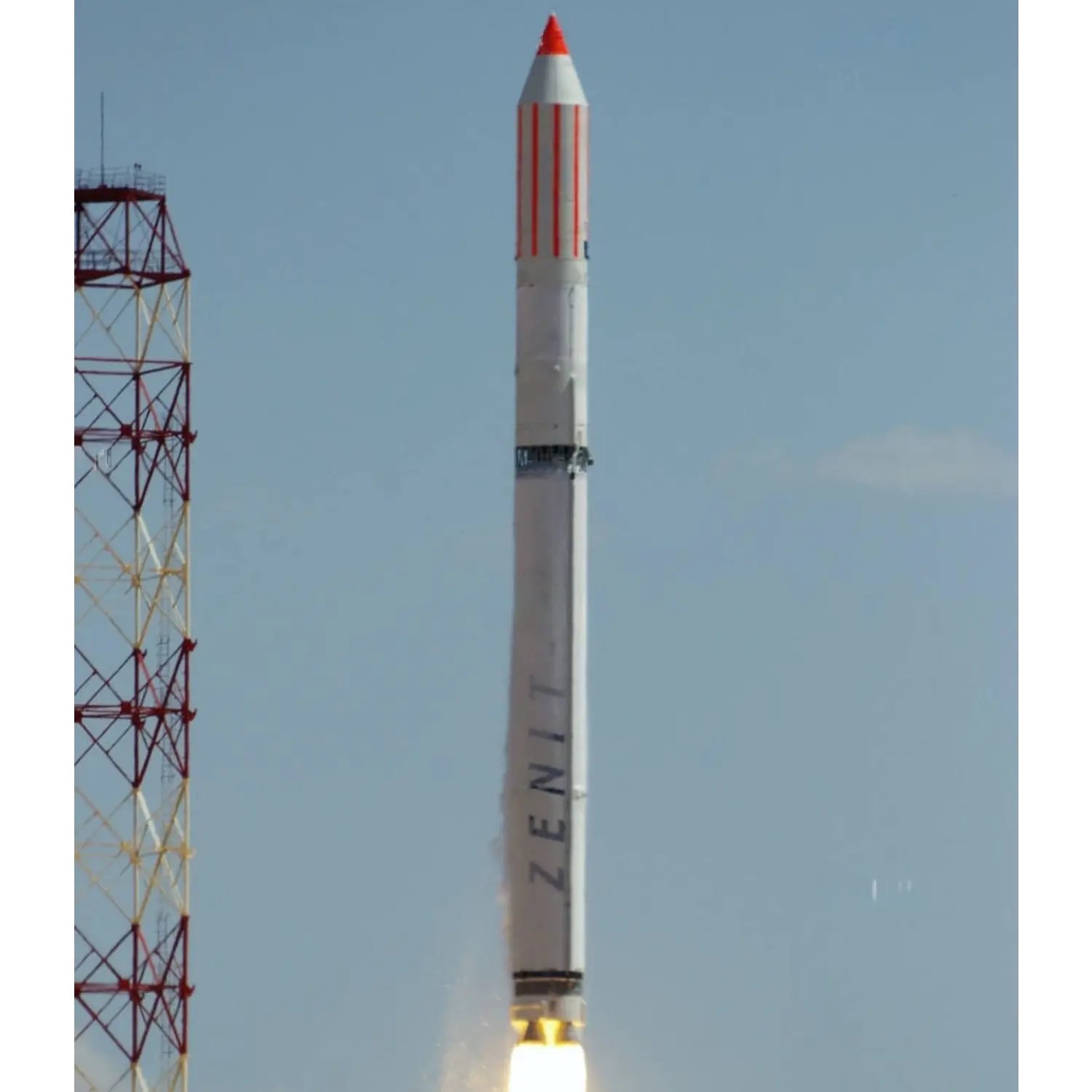Meteor-3M n°1 & Others
Launch Success
Liftoff Time (GMT)
17:18:57
Monday December 10, 2001
Mission Details
Meteor-3M n°1
The Meteor-3M spacecraft series represents a modernization of Russia's national meteorological satellite system sponsored by Roskosmos, Moscow. The overall objective are environmental monitoring in the following fields: • Monitoring of ocean and land surfaces • Meteorological observations: Distribution of cloud data and vertical ozone profiles, monitoring of global atmospheric parameters such as temperature and water vapor profiles and to obtain sea surface wind profiles and SST • Measurement of vertical profiles of aerosol, ozone and other constituents in the atmosphere (SAGE-III) • Measurement space environment parameters (space weather) such as: particle fluxes and radiation density fluxes. The Meteor-3M-1 spacecraft was designed and built by NIIEM in Istra, Russia. The spacecraft structure consists of: a) hermetic container with instrument rack, b) instrument platform, and c) solar arrays. Most electronics and some service system modules are contained in the hermetic container. Most payload instruments and some service modules are mounted to the external thermally stabilized platform. Significant changes have been introduced including the modification of attitude system, installation of new radio transmission system and modification of the information devices and measurement instruments. The spacecraft is three-axis stabilized. The S/C pointing accuracy 0.1º, the angular drift rate is 0.0005º/s. A navigation subsystem (GPS/GLONASS receiver) provides orbit determination and timing services. Solar power of 2 kW is provided by two deployed panels which are continuously sun pointed for optimum power generation (solar panel area of 23 m2, solar array span of 14 m). The S/C mass is 2 477 kg (payload mass of ~900 kg), the design life is three years.
Sun-Synchronous Orbit
1 Payload
2,477 kilograms
Kompass 1
Compass or Kompas is intended for the detection of the effects of the action of the tectonic breakings of the Earth on the environment, the search for lithospheric, atmospheric and ionospheric responses to changes in the state of the zone of the tectonic activity, which can be important for the prediction/forecast of natural catastrophes, the study of the possibility of the development/detection of the concealed/latent layers of useful minerals - including of oil, gas.
Sun-Synchronous Orbit
1 Payload
80 kilograms
Badr-B
The Badr-B (Urdu: بدر-۲) is the second spacecraft and the first earth observation satellite launched into Earth orbit by the SUPARCO — Pakistan's national space agency. Badr-B is a microsatellite, with a mass of 68,5 kg, and contained the computerized system to conduct the studies on the gravity gradient. Badr-B is a research satellite to explore the upper atmosphere and the near space, and carried a large array of instruments for geophysical research. The Badr-B payload was equipped with several CCD cameras, compact dosimeter, a telemetry system, charge detector and a temperature control unit. It is intended to complete and update the Islamabad Mission Control Center (IMCC), and to test the remote sensing CCD instruments.
Sun-Synchronous Orbit
1 Payload
69 kilograms
MAROC-TUBSAT
The MAROC-TUBSAT or Zarkae Al Yamama project is a cooperation between CRTS Morocco and the Institut für Luft-und Raumfahrttechnik in Berlin, where the Moroccan side is responsible for payload and launch and the German side for the satellite bus. The camera has a focal length of 72 mm and a field of view of about 8°. The main tasks of the satellite are Earth remote sensing and vegetation detection with a medium resolution of about 300 m, store and forward communications for mobile localization and developing attitude control strategies for high resolution earth observation.
Sun-Synchronous Orbit
1 Payload
47 kilograms
Reflector
The Reflector (Retro-reflector Ensemble For Laser Experiments, Calibration, Testing & Optical Research) microsatellite is a passive reflective spatial reference test object consisting of separate prism retroreflectors placed in reference points (nodes). It will be used for retroreflection of laser radiation coming from a ground-based laser radar to analyze and investigate the return signal structure for determination of spatial (angular) resolution, testing, and identification of spacecraft which may be defined as space debris. The REFLECTOR microsatellite was launched as a piggyback load on board of the Meteor-3M 1 satellite.
Sun-Synchronous Orbit
1 Payload
6 kilograms
Launch Site
Stats
Zenit
42nd
Mission
3rd
Mission of 2001
2001
57th
Orbital launch attempt

